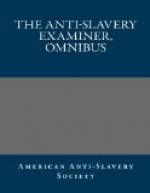[Footnote A: The superintendent of the Wesleyan mission informed us that the collection in the several Wesleyan chapels last year, independent of occasional contributions to Sunday schools, Missionary objects, &c., amounted to L850 sterling, or more than $4000!]
In a letter dated December 2d, 1834, but four months after emancipation, and addressed to the missionary board in England, the Rev. B. Harvey thus speaks of the Moravian missions: “With respect to our people, I believe; I may say that in all our places here, they attend the meetings of the church more numerously than ever, and that many are now in frequent attendance who could very seldom appear amongst us during slavery.” The same statements substantially were made to us by Mr. H., showing that instead of any falling off the attendance was still on the increase.
In a statement drawn up at our request by the Rector of St. John’s, is the following: “Cases of discipline are more frequent than is usual in English congregations, but at the same time it should be observed, that a closer oversight is maintained by the ministers, and a greater readiness to submit themselves (to discipline) is manifested by the late slaves here than by those who have always been a free people.” “I am able to speak very favorably of the attendance at church—it is regular and crowded.” “The negroes on some estates have been known to contribute willingly to the Bible Society, since 1832. They are now beginning to pay a penny and a half currency per week for their children’s instruction.”
MORALITY.
The condition of Antigua, but a very few years previous to emancipation, is represented to have been truly revolting. It has already been stated that the Sabbath was the market day up to 1832, and this is evidence enough that the Lord’s day was utterly desecrated by the mass of the population. Now there are few parts of our own country, equal in population, which can vie with Antigua in the solemn and respectful observance of the Sabbath. Christians in St. John’s spoke with joy and gratitude of the tranquillity of the Sabbath. They had long been shocked with its open and abounding profanation—until they had well-nigh forgot the aspect of a Christian Sabbath. At length the full-orbed blessing beamed upon them, and they rejoiced in its brightness, and thanked God for its holy repose.
All persons of all professions testify to the fact that marriages are rapidly increasing. In truth, there was scarcely such a thing as marriage before the abolition of slavery. Promiscuous intercourse of the sexes was almost universal. In a report of the Antigua Branch Association of the Society for advancing the Christian Faith in the British West Indies, (for 1836,) the following statements are made:




